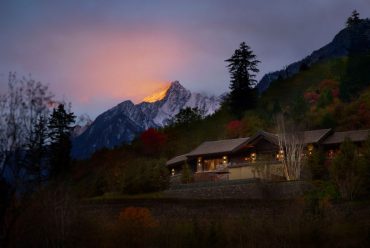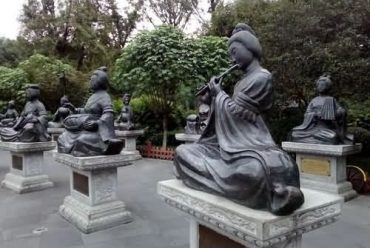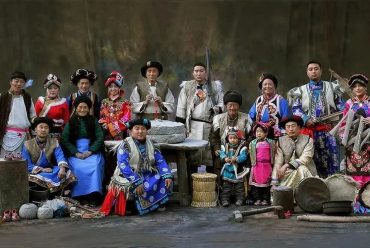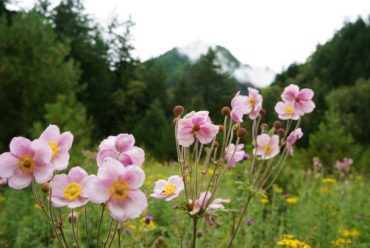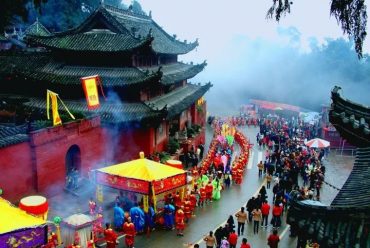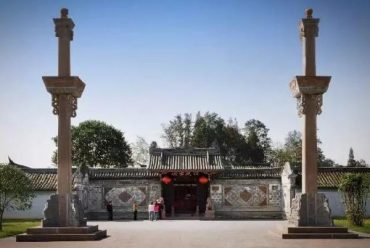Tour Details
Maecenas sed diam eget risus varius blandit sit amet non magna. Cras mattis consectetur purus sit amet fermentum. Duis mollis, est non commodo luctus, nisi erat porttitor ligula, eget lacinia odio sem nec elit. Donec id elit non mi porta gravida at eget metus. Donec id elit non mi porta gravida at eget metus.
Aenean lacinia bibendum nulla sed consectetur. Maecenas faucibus mollis interdum. Cras mattis consectetur purus sit amet fermentum. Curabitur blandit tempus porttitor. Nulla vitae elit libero, a pharetra augue. Vivamus sagittis lacus vel augue laoreet rutrum.
Day1 Chengdu-Ya’an-Luding-Kangding-Xinduqiao
Transport
From Chengdu, go by car or bus along the Chengdu-Ya’an Expressway to the so-called Rain City, Ya’an; take in the distinctive Chengdu Plain scenery along the way, and get a glimpse of the Tibetan way of life.
Xinduqiao Scenic Area
Located at the intersection of southern and northern Sichuan-Tibet Highway, Xinduqiao enjoys natural beautiful scenery. Passing through Zheduo Mountain Pass, tourists can see Tibetan villages scattering on both sides of the road, and a river flows slowly along the village. Sparse yak and goat are roaming on the hillside. Compared to the scenery in the south of the Yangtze River, it enjoys a splendid scene in spring and autumn.
Day2 Xinduqiao-Yajiang-Litang-Daocheng
Transport
Cross the Daocheng Ancient Glacier Cap (Haizishan Nature Reserve), the largest fossil glacial site on the Qinghai-Tibet Plateau, to get to Shambhala–Daocheng.
Tips
1.September-October is the best time to visit Daocheng.
2.Some precautions are necessary in consideration of the altitude – there is a risk of altitude sickness, and additionally, due to the significant diurnal temperature variation and strong UV radiation, both thermal clothing and sunscreen are essential.
Day3 Daocheng Tour
Daocheng
Daocheng, also called “Daoba” in Tibetan, is situated at the south of Ganzi Tibetan Autonomous Prefecture. “Dao” means gully tail where valley stream is formed, while “Daoba” means the wide place of valley. It houses Haizi Mountain Natural Reserve, the largest fossil ice site on Qinghai-Tibet Plateau, Banghe Scenic Area, Three Snow Mountains and world-famed Yading Scenic Area.
It is often said that Daocheng Yading is the last pure land on the earth. Joseph Rock, an American explorer, visited Yading in 1928 and published his pictures on National Geographic Magazine, causing a great sensation.
Tips
1.The scenery of the terracotta valley, the idyllic Tibetan villages, the serene Chonggu Temple (Tibetan Buddhism Temple) and the sacred Holy Mountains is picturesque and charming, as if created just for your sensory pleasure, and a refreshing dip in the Shangri-La Spring in the evening is a particularly soothing way to round off a day of sightseeing.
2.Some things not to be missed include the magnificent display of azaleas in full bloom, a visit to some of the ancient temples, a bicycle ride around Daocheng, and the luxury of relaxing in a soothing hot spring.
Day4 Yading Tour
Yading
Yading Natural Reserve in Yading Village, Riwa Township, Daocheng County is a valley scenic area. “Yading”, the “Place under the Sun” in Tibetan, is the core scenic area of Daocheng. Joseph Rock, an American botanist and explorer, visited Yading in 1928 and published his articles and pictures on National Geographic Magazine, introducing Yading to the whole world. Yading houses three holy snow mountains, i.e. Xiannairi (6,032m, north peak), Yangmaiyong (5,958m, south peak) and Xianuoduoji (5,958m, east peak), which means “Three Religious Lord Snow Mountains” in Tibetan, and ranks the 11th among 24 holy mountains of the Buddhism. Three snow mountains arrange in a triangle shape with short distance. According to historical records, Master Padmasambhava consecrated Yading in 800 AD, and named such three mountains with Goddess of Mercy, Manjusri and Vajrapani respectively. Tibetan believers believe they should go to Yading to worship once at least in their life.
Tips
This is a lengthy leg of the trip with few options for food along the way, so it is advisable to prepare a picnic and stop at one or more of the many peaceful clearings for a bite to eat and a rest. It would be best to return to Daocheng for the night.
Day5 The Holy Mountains, Milk Sea, and Five-Color Lake
Niunai Lake
Climbing from Luorong Cow Farm (climbing about 500m), passing through a cluster of prayer flag and crossing a large lawn, you may see Niunai Lake slowly flowing at the foot of Yangmaiyong Snow Peak. Niunai Lake (also called Milk Lake), “Weirecuo” or “E”rongcuo” in Tibetan, is a crystal and dark blue glacier lake with an area of 0.5 hectare, and is surrounded by snow mountains. According to legend, it was a sacred lake which can cure various diseases. If you are in good physical condition and continue to climb via Niunai Lake, you may arrive at the col between Yangmaiyong and Xiannairi, and look back to three snow mountains, experiencing a different dreamlike world.
Five-Color Lake
It is located between Xiannairi and Yangmaiyong with its elevation of 4,600m and an area of 0.7 hectare. Climbing over a steep hillock above Niunai Lake (climbing over 100m), you may overlook a round and changeful lake which is known for its five different colors generated by light reflection. It, “Mudicuo” or “Danzengcuo” in Tibetan, is a famous sacred lake in Tibetan areas, which enjoys equal popularity with Yamdrok Lake in the Buddhist texts. According to legend, it can repeat history and predict the future.
Tips
This is a lengthy leg of the trip with few options for food along the way, so it is advisable to prepare a picnic and stop at one or more of the many peaceful clearings for a bite to eat and a rest. It would be best to return to Daocheng for the night.
Day6 Daocheng-Chengdu
Transport
There are direct flights from Daocheng to Chengdu, which take about an hour.






